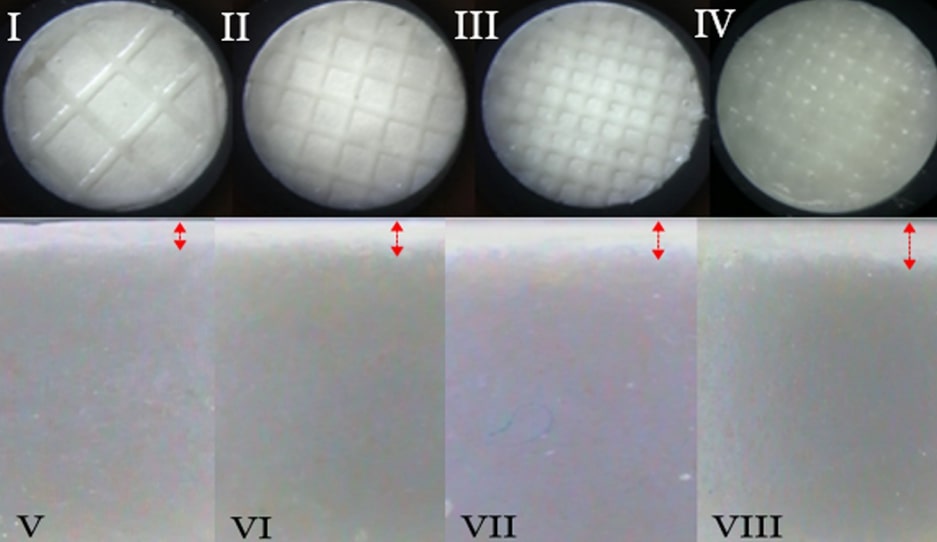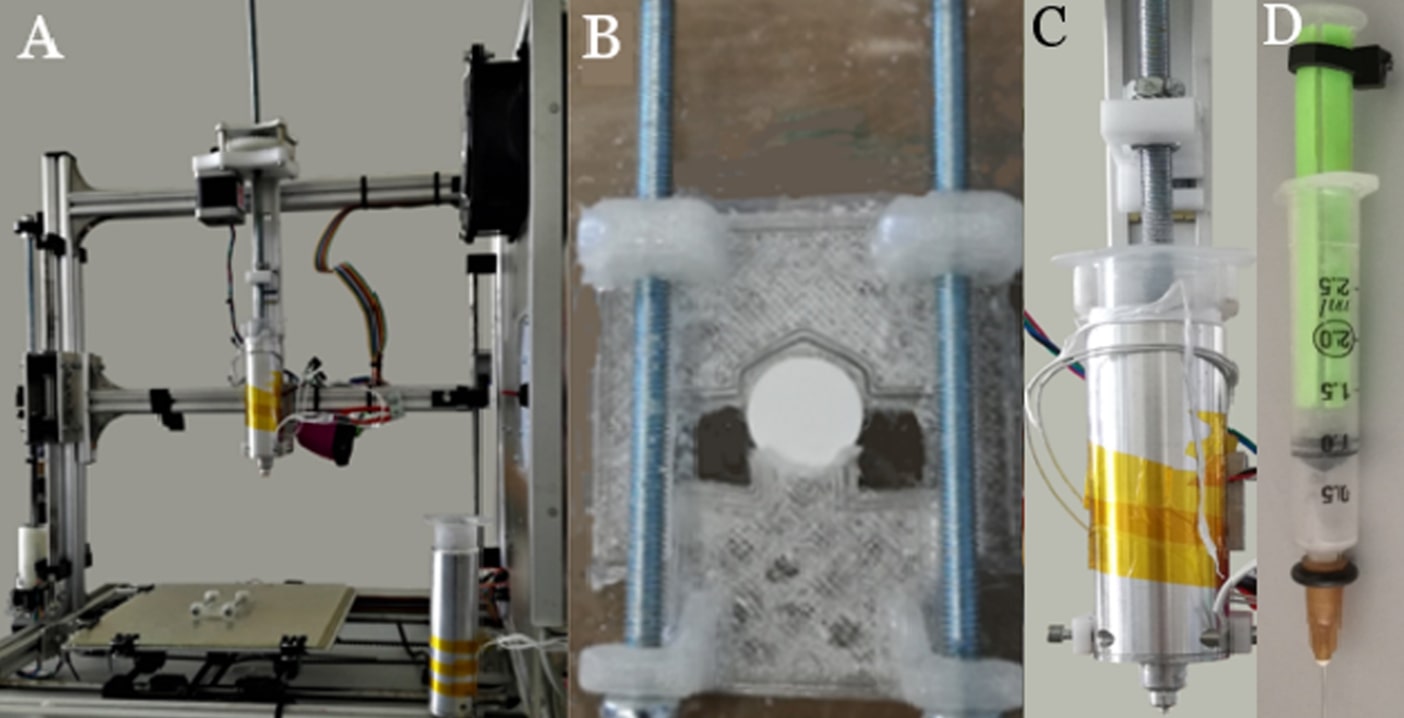A group of researchers from Greece and Italy have explored the use of 3D printing as a coating technology for customizing the release rate of drugs for patient-specific delivery.
Using semi-solid extrusion 3D printing technology to partially coat the tablet, the researchers set about tuning the release of two Active Pharmaceutical Ingredients (APIs) within the tablet. The team were able to customize the selected APIs release profile by modifying various parameters of the 3D printing coating process using experimental design techniques.
By tuning these parameters, the researchers have been able to achieve different dissolution profiles for the tablets, thus customizing their release rate. As such, this process can be tuned according to a specific patient’s needs, according to the researchers: “The feasibility of the proposed technology was shown by modifying the geometry of the coating and acquiring knowledge on which of these parameters and/or their interactions affect the release profile of the APIs and thus achieving personalized drug release rates according to the patient’s needs,” explain the authors.

The advantages of 3D printed pharmaceuticals
The authors of the study first set out describing the advantages of using 3D printing in the production of pharmaceuticals. They explain that 3D printing’s ability to produce multiple versions of a drug for variant populations in short run batches is challenging the traditional manufacturing technologies. This is exemplified by the FDA approval of Spritam, the first 3D printed pill to receive such a certification in 2015.
Spritam, produced by Aprecia Pharmaceuticals, is used to treat seizures in people with epilepsy. Aprecia 3D printed the pill using its ZipDose process, a method that involves the use of print fluids to bind layers of API-containing powder together into porous structures or tablets. The porosity of the tablets is the main advantage of Aprecia’s ZipDose 3D printed pill technology, as they are more porous than those made using conventional methods. This then means that they dissolve, and act, much faster when taken with a sip of water.
However, the researchers also explain that the literature and research on the use of 3D printing for the coating or partial coating of solid dosage forms is limited, while the materials used consist of a specific range of polymers. Additionally, the researchers found that no publications demonstrated the use of glycerides for the coating of tablets with 3D printing. Glycerides are emulsifiers, meaning they help to blend oil and water. As such, they are often used as food additives to improve texture and stability, prevent oil from separating, and extend shelf life.

Tablet coating using 3D printing
Identifying this gap in research, the aim of the team’s study was to demonstrate the feasibility of employing 3D printing to partially coat tablets with glycerides, where the release of two API’s would be precisely regulated by controlling the coating characteristics only, without modifying the core formulation. Such a process would benefit the production of tablets with tailored release profiles, as it eliminates the need for complex equipment and processes, and thus accelerates the time production to patient.
As such, this process does not use 3D printing to produce the tablets, instead they were produced using conventional manufacturing processes. 3D printing was only used to partially coat the tablet in order to demonstrate an alternative application of the technology, and how it can be leveraged to alter the API release profile of already commercially available dosage forms according to the desired therapeutic effect.
The tablet coating process was carried out using a lab scale 3D printer for semisolids, designed and constructed at the Dpt. of Mechanical Engineering, University of Parma, Italy. A support structure was 3D printed and attached to the printing bed in order to keep the tablets at the same position while the coating was printed. The coating was partially applied to the tablets through material extrusion using a heated syringe filled with glyceride.

Subsequently, the dissolution profiles were recorded and analysed in order to identify the effect of the selected coating parameters on the API release of the two selected drugs. The researchers found that different dissolution profiles could be achieved for both the API by tuning three coating parameters, namely the surface coverage, number of the applied layers and the number of the coating sides. Concluding the research, the authors state that: “3D printing technology can be successfully used in addressing the challenging demands for designing dosage forms with release profiles customized to each patient’s unique needs and/or production at the point of need.”
The paper, “Partial tablet coating by 3D printing” is written by Eleni Tsintavi and Dimitrios M. Rekkas of the Department of Pharmacy, National & Kapodistrian University of Athens, and Ruggero Bettini of the Food & Drug Department, University of Parma. It is published in the ‘International Journal of Pharmaceutics’.
The nominations for the 2020 3D Printing Industry Awards are now open. Who do you think should make the shortlists for this year’s show? Have your say now.
Subscribe to the 3D Printing Industry newsletter for the latest news in additive manufacturing. You can also stay connected by following us on Twitter and liking us on Facebook.
Looking for a career in additive manufacturing? Visit 3D Printing Jobs for a selection of roles in the industry.
Featured image shows CAD drawings of coating. Image via International Journal of Pharmaceutics.


